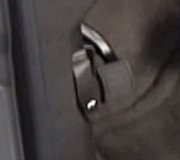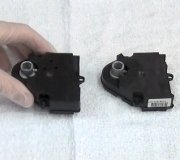You got caught with one of the many tricks the GM engineers designed in to force you to go back to the dealer. It's one of the reasons they're losing so many repeat customers and have to keep finding new ones. To address this poor business practice there are a number of "memory saver" devices available. Battery shops use them because they've been stung so many times too. I simply connect a small battery charger to the battery cables but you run the risk of touching the positive cable to the negative one or to anything metal on the vehicle. That will short it out and defeat its purpose. Also, there will be a small spark when you disconnect and reconnect the cables. I blow over the top of the batteries first to disperse any explosive hydrogen gas they give off.
There are small memory savers available that use a nine-volt transistor battery for the power source, and they plug into the cigarette lighter outlet or a power outlet if you have one. There's two things to watch out for though. First, you have to verify that outlet always has power when the ignition switch is off. If it switches off when the ignition switch is off, power can't back-feed to the various computers and their memory circuits. Also, a lot of vehicles now have accessory circuits that stay live with the ignition switch off until you open a door or until they time out after a pre-programmed period of time, such as five minutes. Apparently the engineers think that is a worthwhile gimmick but it can trick you into thinking a power outlet will always be on. There also has to be another computer circuit involved in running that feature, and the overuse of unnecessary computers is already a huge problem. The environment these electronics live in is not suitable for their reliability.
The second problem is that nine-volt transistor battery can easily meet the tiny current demands of all the computer memory circuits, and there can be up to 47 computers on GM vehicles, but they are not strong enough to run interior lights or anything that turns on with the ignition switch. You have to remember that while the unit is operating and the vehicle's battery is disconnected, do not open any door or turn on the ignition switch. Be sure too to remove the ignition key and keep it in your pocket or leave some windows rolled down. Another clever trick that only applies to GM vehicles is the doors will lock automatically when any normal person would expect them not to, and a lot of people end up having to call a locksmith or call their spouse with a second key. The memory saver can't power the lock system either so the battery will be shorted out and again, defeat its purpose.
Newer vehicles have electronic keys with proximity sensors. More computers, more problems, and more frustration. Those keys have to be set a good distance away from the car so some of the computers will turn off. Simply walking near the car with the key in your pocket will fire up some of the electronics and kill the memory saver. The only value to this type of system is to make money for the dealers. Other than that, they don't do anything our cars didn't do before by simply inserting and turning the ignition switch.
Friday, January 3rd, 2014 AT 1:55 PM


